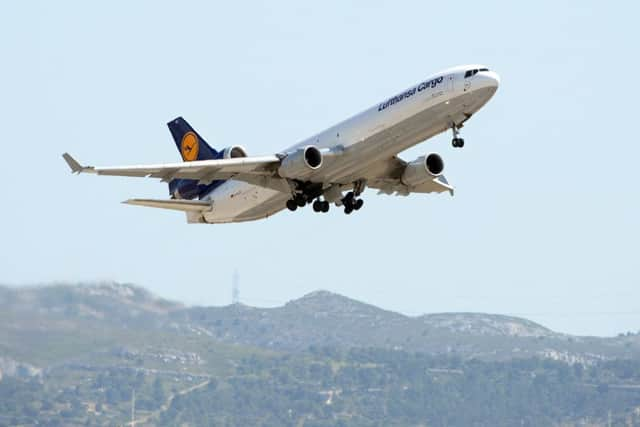Come fly with us and just sit back


For many of us, the excitement is building for our summer getaway. The temperature is rising and shorts and t-shirts are slowly emerging from their eight-month hibernation, creased, but determined to remain the top choice for their wearers until the darkness of next winter relegates them once more.
A good proportion of us will take to the skies over the next few months to reach our holiday destinations and whether we choose a popular, established holiday destination or a “back to basics” survival trek in one of the world’s remotest destinations, you will expect the flight to and from your paradise to be without drama.
Advertisement
Hide AdAdvertisement
Hide AdIn the world of air traffic control, we have that same desire and work particularly hard to realise that expectation, even with growing air traffic levels and increased demand.
The number of air traffic movements previously peaked between 2006 and 2008 before being impacted by the global economic downturn. However, the average amount of delay per flight for NATS En Route control has been in steady decline since peaking in 2002, with the average delay per flight sitting at approximately two seconds NATS-wide; for NATS’ Prestwick Centre, the figure is less than 25 per cent of that.
In some parts of our operation, the traffic is now back or getting back to those peak levels. This year in our North Atlantic Oceanic (Shanwick) operation, we have seen our busiest April ever, indicating that this summer will be amongst the busiest we have ever experienced. In our domestic, radar-based operation, spikes in air traffic numbers are similar to those experienced back in 2007, although the total number of flights is not expected to reach the levels seen in the late “noughties” until nearer to the end of this decade.
Whatever demands are placed on the overall aviation network, we have to be ready to meet the challenges they bring while maintaining unparalleled safety levels. The network is constantly evolving and demand for the routes morph with each passing season. At NATS’ Prestwick, we take advantage of milder traffic peaks over the winter period to prepare ourselves for the upcoming seasonal air traffic.
This winter we have delivered new airspace designs that have introduced greater flexibility for the smaller single piloted airspace user while simultaneously optimising the routes available for passenger-laden air traffic. We have established Direct Route Airspace (DRA) in our upper airspace to offer more environmentally efficient route profiles for our customers and marginally shorter journey times for their passengers. We have also delivered a new flight data processing system in our Oceanic operation that improves the service offering across the North Atlantic and delivers enhancements in fuel burn and safety.
We have taken the time over the winter to prepare our people, too. We have completed additional training days for our supervisory staff, encouraging them to discuss and practice the skills they need for managing the traffic presented to them and giving them the capability to manipulate the capacity of the network to distribute the traffic in the most effective way. We have completed training for our controllers too, giving them additional time in the simulators, practicing unusual circumstances or reinforcing techniques for controlling high levels of traffic in our “getting ready for summer days2.
And we still have some changes to deliver. In late June we will redraw the boundaries between some of our airspace sectors so that the design best suits the optimal traffic flow. We will also enable the delivery of new departure routes from Edinburgh to assist the airport in its aspiration to depart more aircraft in a shorter timeframe.
Work will continue through the seasons on delivering the game-changing technology and capability that delivers the capacity improvements needed to meet the challenges of the coming decades. Over the next five years NATS will deliver new technical capability into both of its air traffic control centres, with the first deployment at Prestwick in early 2016. The transformation in our radar-based operation will take almost five years to complete and deliver improvements in safety, airspace capacity and environment.
Advertisement
Hide AdAdvertisement
Hide AdSo as you prepare for your summer, whether your plan is to rest by a pool, or trek through the Andes, rest assured our preparations for this summer have been underway for some time. Our aim is to be invisible to you as a passenger and not to become a feature of your well-earned holiday.
• Tom Kirkhope, Head of Safety, NATS Prestwick, www.nats.aero